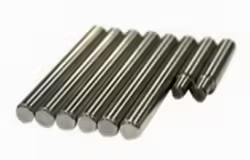
Is SAE 1020 Steel Worth the Investment in Your Industry?
Table of Contents
Introduction
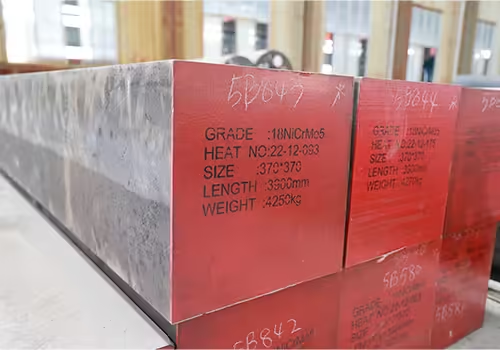
Choosing the right steel grade for your industrial needs can be a critical decision with long-term implications. Among the many available options, sae 1020 steel is frequently chosen due to its favorable mechanical properties and cost-efficiency. This steel grade is a low-carbon, general-purpose steel with excellent weldability and machinability, making it suitable for various applications, including automotive parts, industrial machinery, and structural components.
Industries that depend on consistent quality, moderate strength, and reasonable pricing often look toward sae 1020 steel as a practical material. But the core question remains: Is sae 1020 steel truly worth the investment for your specific operations?
This article delves deep into the characteristics of sae 1020 steel, its advantages and limitations, its performance in comparison with other steel grades, and how different sectors can benefit from its use. We will explore its impact on cost-effectiveness, productivity, and long-term utility to help you make an informed decision.
Key Properties That Make SAE 1020 Steel Popular
To determine whether investing in this type of low-carbon steel is a smart decision, it’s important to analyze the fundamental physical and chemical traits that underpin its performance across various industries.
Chemical Composition
Sae 1020 steel is primarily composed of iron, carbon, and a small percentage of manganese. The low carbon content—around 0.18% to 0.23%—gives the steel good machinability and excellent weldability.
- Carbon: 0.18%–0.23%
- Manganese: 0.30%–0.60%
- Phosphorus: max 0.04%
- Sulfur: max 0.05%
- Iron: Balance
Mechanical Properties
The mechanical strength of sae 1020 steel is suitable for many medium-duty industrial applications. Here are some of tWhen considering strength and flexibility, this steel grade offers a balanced profile suitable for numerous medium-duty applications. Commonly noted mechanical properties include:
- Yield strength: Around 350 MPa
- Tensile strength: Up to 420 MPa
- Elongation at break: 15% to 30%
- Hardness: Approximately 119 HB (Brinell hardness)
These features make the alloy an excellent candidate for components that require consistent performance without the need for high tensile capacity. Its mechanical stability under typical working stresses gives manufacturers confidence in reliability and repeatability.
Physical Characteristics
- Density: 7.87 g/cm³
- Melting point: Around 1515°C
- Impact resistance: Reliable under standard conditions
- Machined surface: Smooth and clean finish post-processing
The combination of these physical attributes ensures that the metal performs efficiently, especially in machine shops and fabrication facilities where finish quality and material behavior are crucial.
Weldability and Machinability
Among the most attractive characteristics of this alloy is how easily it can be machined and welded. Whether it’s being cut, drilled, turned, or milled, it handles standard machining operations with minimal wear on tools. The material is also highly compatible with common welding methods like MIG, TIG, and arc welding, making it ideal for both shop fabrication and on-site assembly tasks.
Industrial Applications
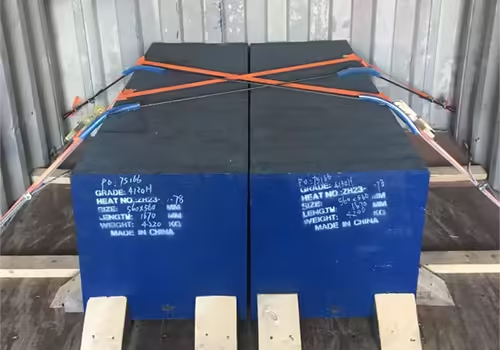
Due to its balanced composition and mechanical behavior, sae 1020 steel finds applications across a wide spectrum of industries.
Automotive Industry
In the automotive world, sae 1020 steel is used to manufacture shafts, gears, pins, and bolts. It offers the necessary strength for these components while remaining easy to process, keeping manufacturing costs under control.
Construction and Infrastructure
In structural applications, sae 1020 steel is often used in bolts, fasteners, and machinery parts due to its toughness and durability under standard working conditions. It also serves as a foundation material in certain low-load bearing frameworks.
Agricultural Machinery
The agricultural sector benefits from sae 1020 steel in the form of tractor parts, implement arms, and brackets. Its resistance to wear and shock loads is sufficient for moderate-duty field applications.
General Engineering
Engineering workshops and fabrication units use this steel grade for jigs, fixtures, machine tool components, and frames. Its ease of cutting, welding, and forming makes it ideal for customized and small-batch jobs.
Advantages of Choosing SAE 1020 Steel
When selecting materials for industrial manufacturing, the choice must balance performance, cost, and long-term reliability. This low-carbon steel grade offers a compelling mix of characteristics that make it especially suitable for a wide array of general-purpose engineering applications. From cost-effectiveness to processing ease, its advantages provide clear value across industries.
Cost-Effective Material
One of the most attractive features of this mild steel variety is its affordability. Thanks to its relatively low carbon content and the absence of expensive alloying elements, the material can be produced in large volumes at a lower cost compared to alloy or high-carbon steel alternatives. For companies aiming to keep production budgets under control—especially in high-volume manufacturing—this translates to significant savings in raw material expenses. Bulk purchases amplify the cost benefits further, making it an economical choice without compromising functional integrity for moderate-duty components.
High Process Efficiency
In a production setting, the speed and ease with which a material can be machined, welded, or formed directly affect manufacturing efficiency. This carbon steel variant excels in that regard. Whether it’s being drilled, turned, or milled, it responds well to conventional machining operations, often requiring minimal tooling adjustments. Its excellent weldability also allows for rapid joining without complex pre-treatment processes. These attributes not only shorten lead times but also reduce labor costs and machine wear—making it a preferred option for workshops and production lines looking to streamline operations.
Readily Available
Material accessibility is another strong point. Unlike some niche alloys that must be custom-ordered, this grade of steel is widely stocked by distributors around the world. It can be sourced in a variety of standard shapes, including round bars, flat plates, rolled sheets, and coiled strips. This widespread availability ensures minimal wait times for procurement and reduces the risk of project delays due to supply chain bottlenecks. Manufacturers can count on it being in stock when needed, facilitating smoother inventory management and just-in-time production models.
Compatibility with Heat Treatment
Although the steel is often used in its as-rolled state, it also accommodates a range of thermal processing techniques. Heat treatments such as carburizing, normalizing, annealing, and surface hardening can be applied to improve specific performance characteristics like surface durability or internal toughness. These options enable engineers to tailor the material to meet varying application demands. For example, carburizing can enhance wear resistance for components subject to friction, while annealing improves ductility for parts that require forming or shaping post-fabrication.
Environmental Sustainability
From a sustainability perspective, this form of carbon steel is a smart selection. Being fully recyclable, it contributes to the circular economy and helps manufacturers reduce their environmental footprint. Unlike composite materials or heavily alloyed metals that require energy-intensive processing, this steel’s simpler composition leads to a lower environmental impact during both production and end-of-life recycling stages. Additionally, minimal alloying means fewer resources are consumed in its refinement, making it a greener option for eco-conscious operations.
Potential Drawbacks to Consider
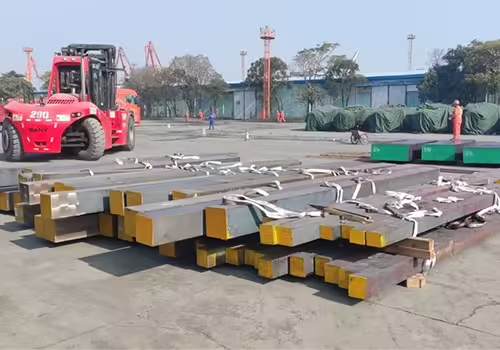
Despite its many advantages, sae 1020 steel may not be the ideal solution in every scenario. Understanding its limitations is essential before making an investment.
Not Suitable for High-Stress Applications
With its relatively low tensile strength, this steel grade may not be suitable for applications involving heavy loads, extreme impact, or high-pressure conditions.
Limited Corrosion Resistance
Unlike stainless steel or coated materials, sae 1020 steel does not inherently resist corrosion. It may require additional protective coatings or be limited to indoor or dry environments unless otherwise treated.
Moderate Wear Resistance
Though it performs well in moderate conditions, its wear resistance is not ideal for high-friction or abrasive environments without surface treatments.
Surface Treatment May Be Necessary
For aesthetic or functional reasons, additional surface treatments like galvanizing, painting, or coating may be required, adding to the cost and complexity of using the material.
Comparative Analysis Table
To give a clearer picture, here is a comparative table showing how sae 1020 steel stacks up against other commonly used steel grades.
| Property | SAE 1020 Steel | SAE 1045 Steel | AISI 4140 Steel | Stainless 304 Steel |
|---|---|---|---|---|
| Carbon Content | 0.18-0.23% | 0.43-0.50% | 0.38-0.43% | <0.08% |
| Weldability | Excellent | Moderate | Moderate | Good |
| Machinability | Excellent | Good | Fair | Fair |
| Tensile Strength (MPa) | ~420 | ~570 | ~655 | ~505 |
| Cost | Low | Moderate | High | High |
| Corrosion Resistance | Low | Low | Low | Excellent |
| Heat Treatable | Yes | Yes | Yes | No |
This table demonstrates how sae 1020 steel offers a practical balance between performance and cost, though it may not match the strength or corrosion resistance of more advanced alloys.
Case Studies: Real-World Use of SAE 1020 Steel
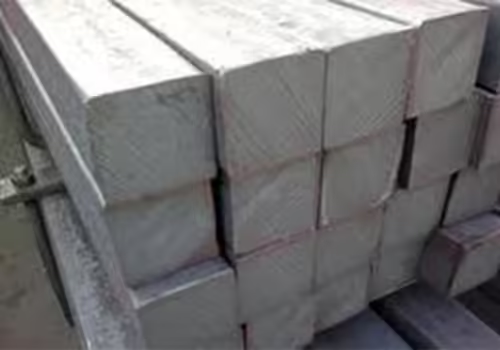
Manufacturing Workshop in Germany
A medium-sized machinery firm switched from imported alloy steel to locally sourced sae 1020 steel for its machine base frames. The result was a 17% cost reduction and a 24% faster turnaround time for machining and welding operations.
Automotive Component Supplier in India
A supplier of suspension parts adopted sae 1020 steel for control arm brackets. After heat treating the material, they achieved the required surface hardness while reducing material expenses by 12%.
Agricultural Equipment Builder in Brazil
This company used sae 1020 steel for mounting arms and pivot points. Although the steel required surface coating due to field exposure, the savings on raw material costs outweighed the additional coating expense.
Conclusion
Whether sae 1020 steel is the right investment for your industry depends on the nature of your applications. For manufacturers and engineers seeking a balance of cost-efficiency, process versatility, and moderate mechanical performance, it remains one of the most reliable steel grades on the market.
Its ability to streamline production, compatibility with multiple fabrication techniques, and consistent performance in medium-duty scenarios make it a go-to option in a variety of industrial settings. However, for environments demanding high tensile strength, extreme wear resistance, or superior corrosion protection, alternative steels may be more suitable.
Ultimately, the decision comes down to aligning your specific performance requirements and budget constraints with the steel’s capabilities. For many general industrial applications, sae 1020 steel remains a smart and valuable choice.
FAQ
What is sae 1020 steel used for?
It is used in automotive components, machinery parts, structural frameworks, jigs, and agricultural tools. It’s popular where moderate strength and good fabrication properties are needed.
Can sae 1020 steel be heat treated?
Yes. It responds well to processes such as carburizing and annealing to improve hardness and wear resistance without losing ductility.
How does sae 1020 steel compare to sae 1045?
Sae 1020 steel has lower carbon content, making it more weldable and easier to machine. Sae 1045 is stronger and better for load-bearing parts but harder to work with.
Is sae 1020 steel corrosion resistant?
Not inherently. Without surface treatment or protective coating, it can rust in humid or wet environments.
Is this steel suitable for pressure vessel applications?
Not typically. The mechanical properties of sae 1020 steel are not sufficient for high-pressure applications, and it may not meet specific industry standards required for such usage.
Where can I buy sae 1020 steel?
It is available through most industrial steel suppliers and metal distributors, commonly offered in rounds, flats, plates, and sheets.

